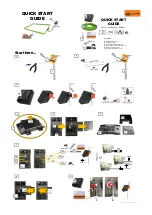
71
Feedback Handling (continued)
During closed loop operation, there are three ways to use the PID
controller and setpoint and feedback signals:
1 setpoint and 1 feedback
1 setpoint and 2 feedbacks
2 setpoints and 2 feedbacks
1 Setpoint and 1 Feedback
In HVAC applications it is often possible to place a pressure or
temperature sensor at the farthest significant load and measure actual
pressure or temperature in the system. In these cases, the drive's PID
controller can respond to system changes, as programmed. When only
one setpoint and one feedback signal are used, the drive responds to
the feedback signal to match the programmed setpoint in parameter
418,
Setpoint 1.
(If a remote reference is used, it will be added to the
setpoint.)
1 Setpoint and 2 Feedbacks
Depending on the feedback function selected in parameter 417,
Feedback Function
, the two feedback signals will be compared to the
setpoint. A description of the individual feedback functions is given in
parameter 417. As above, parameter 418,
Setpoint 1,
will be added to
the remote reference, if a remote reference is used.
2 Setpoints and 2 Feedbacks
Whenever two critical zones do not have the same setpoint value, two
feedback with two setpoint control is required. Many pumping systems
require the monitoring and control of two loads that differ in size and
pressure drop. Or this can be effective when controlling different
temperature zones in cooling or heating applications. Parameter 418,
Setpoint 1
, is the setpoint for zone 1. Feedback for zone 1 is the
feedback signal at terminal 53. Parameter 419,
Setpoint 2
, is the
setpoint for zone 2 and terminal 54 for feedback 2. Bus Feedback 1
and 2 (parameters 535 and 536) are added to their respective
feedback signals, when serial bus data is added to the zone control.
Parameter 417,
Feedback Function
, selects whether the drive will
attempt to have both feedback signals meet the minimum (2 zone min.)
or maximum (2 zone max.) to their respective setpoints.















































